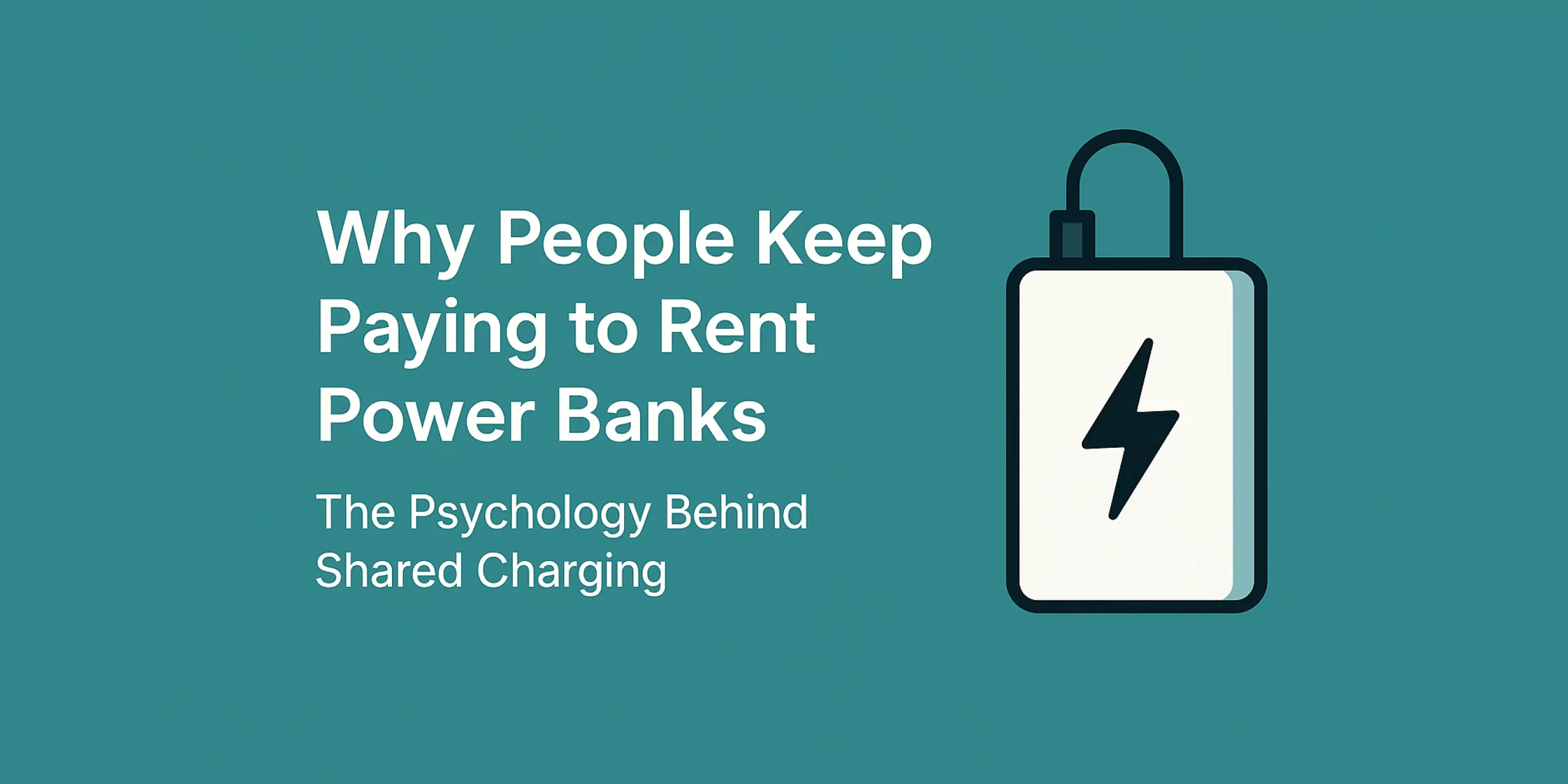
Table of Contents
Every time we see a shared power bank station charging $1.50 per hour, a common question arises:
Why don’t people just buy their own?
After all, a decent portable charger costs around $15–$20. Rationally speaking, a few uses should make it more economical than repeated rentals.
Yet, millions of people across China — and increasingly, around the world — continue to rent power banks every day. Not because they lack the means to buy one, but because renting, in that moment, feels easier, faster, and more convenient.
The key to understanding this behavior lies not in cost-benefit analysis, but in user psychology — specifically, how we make decisions under time pressure, uncertainty, and cognitive load.
1. Immediate Needs Override Long-Term Planning
When a smartphone’s battery dips below 10 percent during a busy day, users are not thinking about long-term savings. They are focused on solving a problem immediately. Renting a power bank becomes an intuitive response to the anxiety of running out of battery — especially when access to payments, transport, or communication is at stake.
This is known as present bias, a well-studied phenomenon in behavioral economics. People tend to favor short-term solutions, even when they are more expensive in the long run.
In this context, paying a small fee for instant access to power seems perfectly reasonable — even if a cheaper, long-term alternative exists.
2. Convenience and Low Decision Friction
Buying a power bank involves multiple steps: choosing a model, waiting for delivery (or making a trip to the store), remembering to charge it, carrying it, and ensuring it’s available when needed.
Renting a shared power bank, in contrast, involves three simple actions:
- Scan the QR code
- Confirm payment
- Take the device
The process takes less than 10 seconds and requires virtually no decision-making. This is a classic case of cognitive ease — when something is familiar, effortless, and streamlined, people are more likely to choose it by default.
Moreover, the widespread placement of power bank kiosks in high-traffic locations — malls, cafés, train stations, and airports — makes renting not only convenient, but habitual.
3. Zero Burden: No Charging, Carrying, or Maintenance
One of the most overlooked advantages of shared power banks is that they eliminate all the responsibilities associated with owning one.
With a personal power bank, the user must:
- Charge it in advance
- Remember to bring it along
- Store and protect it throughout the day
- Ensure it remains functional over time
Shared power banks, on the other hand, require none of this. Users can:
- Rent one when needed
- Use it on the go
- Return it on the spot or at another kiosk
- Walk away without a second thought
This type of cognitive offloading — reducing mental load by outsourcing small tasks to external systems — is increasingly valued in fast-paced urban life. In many cases, convenience outweighs ownership.
4. Price Perception: “Small Payments Don’t Count”
From a purely financial perspective, repeated rentals cost more than owning a power bank. However, because each transaction is small and spaced out, most users don’t register the cumulative cost.
This is related to mental accounting, where people categorize money based on subjective factors rather than actual value. A one-time $1.50 charge feels negligible, especially when solving an immediate problem. Few users stop to calculate how many times they’ve paid for the same service.
In many use cases — such as concerts, airports, or late-night outings — the urgency of staying connected far outweighs concerns about minor spending.
5. Environmental Cues and Passive Decision-Making
Another powerful force behind the popularity of shared power banks is their physical visibility. When users encounter a kiosk exactly when they need it, it serves as a behavioral “nudge” — a subtle prompt that influences decision-making without requiring deliberate thought.
In behavioral science, this is known as choice architecture: the way choices are presented significantly affects the outcome. The more available, visible, and socially accepted a behavior is, the more likely people are to engage in it.
Even seeing others use a shared power bank reinforces its normalcy and convenience, reducing hesitation or second-guessing.
Conclusion: Convenience, Not Cost, Drives User Behavior
Renting shared power banks is not about saving money — it’s about avoiding hassle.
The continued popularity of this service reflects a deeper trend in consumer behavior: users value frictionless, low-effort experiences more than they value ownership or cost savings, especially for small, time-sensitive needs.
Shared power banks succeed because they:
- Remove the need for planning and preparation
- Require no ongoing responsibility
- Are immediately available in the right context
- Offer just enough convenience to justify their price
In an age where attention is scarce and mental energy is stretched thin, services that minimize decision-making and reduce cognitive load have a distinct competitive advantage.



